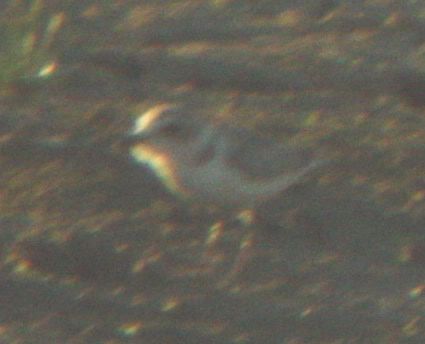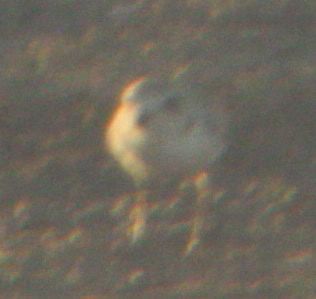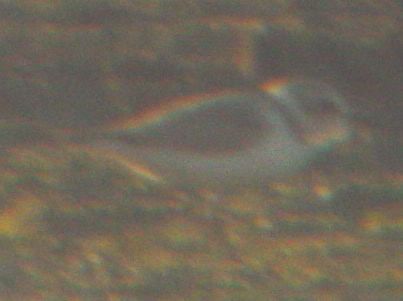Snowy Plover
Charadrius alexandrinus
Pond near Imperial, Allegheny County, PA
6 August 2002
Photos by Mark A. McConaughy
This Snowy Plover was found by John Yuhaniak at a pond along Bald Knob Road during the morning of 6 August 2002. John called Geoff Malosh who came out and confirmed the identification of the bird as a Snowy Plover. The specimen was clearly a pale-colored, small Plover. It had a small, black bill, an incomplete pale breast band and dark legs which eliminated Piping, Semipalmated and Wilson's Plovers. The lack of any rufous or buff color around the face and breast eliminated Mongolian Plover as a possibility. The bird depicted below also has a slightly darker "cheek" patch than the rest of the light brownish-gray mantle which also is typical of Snowy Plovers. This is a great bird for Allegheny County!

This individual displays a small, thin, black bill, pale side patches that are not solid across the breast and dark legs of a Snowy Plover. These are not the highest quality photographs due to conditions. But the do show the bird in question. All the photos were taken close to sunset that provided low light levels for photography. The low sun also resulted in a reddish tinge on the bird in the photos.
The bird was almost constantly on the move and with the low light levels, it was difficult to get a good, still photo of the bird. This picture was taken through my spotting scope with a 32X objective and the camera lens set at 10X for an effective magnification of 320X.

A head-on view of the bird showing the side patches do not extend across the breast of the bird. This photo also shows the paleness of the head and mantle. This picture was taken through my spotting scope with a 32X objective and the camera lens set at 10X for an effective magnification of 320X.

A side view of the bird showing the light mantle. This individual was about the size of some Least Sandpipers that were also around the pond. It was much smaller than the Killdeer that were present. When the bird was observed bathing, it did flash the white tail feathers on the outer edges of the tail with darker inner tail feathers. This picture was taken through my spotting scope with a 32X objective and the camera lens set at 10X for an effective magnification of 320X.
Return
to McConaughy's Birding Page
Return to
McConaughy's Home Page



